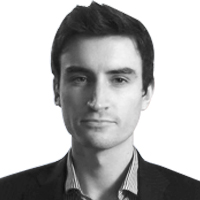Two explosions have ripped through the area surrounding the international airport in Kabul, killing at least 13 U.S. troops and dozens of Afghans who were desperately trying to escape an already chaotic situation in Afghanistan.
Just hours after the U.S. military warned of an imminent terror threat, the twin suicide bombings killed at least 60 Afghans and injured many more, according to The Wall Street Journal, citing a senior Afghan health official. Another health official told The New York Times that at least 40 were dead and 120 wounded.
The Pentagon announced late Thursday that another American service-member had succumbed to his injuries hours after the attack, putting the death toll of U.S. troops at 13 and making it the worst U.S. casualty event in Afghanistan since 2011, when 30 troops were killed in a Taliban attack on a Chinook helicopter.
Another 18 servicemembers were wounded, “all of whom are in the process of being aeromedically evacuated from Afghanistan on specially equipped C-17s with embarked surgical units,” Capt. Bill Urban of the Defense Department’s Central Command said in a statement.
Gen. Kenneth F. McKenzie Jr., commander of United States Central Command, called the continued threat from ISIS “extremely real.”
“We believe it is their desire to continue those attacks,” he said. McKenzie vowed to “go after” those responsible for the “cowardly attack,” saying the U.S. is “prepared to take action against them.”
McKenzie said the first suicide bombing occurred at an “interface point” at the airport’s Abbey Gate where evacuees who have gone through initial screening by the Taliban are then hand-searched by U.S. troops before they can get on flights. “Ultimately Americans have got to be in danger to do these searches,” he said.
That explosion was followed by a second suicide bombing at or close to the nearby Baron Hotel. ISIS later claimed responsibility for the attacks.
McKenzie said he had no information to suggest the Taliban, who assumed control of the country a week ago, were involved. But he admitted U.S. troops were relying on Taliban guards to protect the outer perimeter of the airport.

Medical staff bring an injured man to a hospital after two powerful explosions outside the airport in Kabul.
Wakil Kohsar/Getty“We also know that a number of Afghans fell victim to this heinous attack,” Pentagon spokesperson John Kirby said in a statement. “Our thoughts and prayers go out to the loved ones and teammates of all those killed and injured.”
Rozi Khan, a 28-year-old Afghan trying to flee the country, recounted hearing a “huge bang” then seeing the bodies of children and adults at the scene of the first blast, which happened in a crowded sewage canal where Afghans have been waiting to access the airport.
“I lost my senses for a few minutes and held onto a wall to keep myself awake. I was unconscious for a few minutes, I spotted the only route for escape, through the blast point,” Khan told The Daily Beast.
“The smell of burning flesh was prominent in the air. The blood was everywhere and I walked amongst the dead bodies of children and young people.”
“Every one should leave this country, this country is not for humans,” Khan added. “I won’t come back, I don’t wanna live here, this is not Afghanistan, it’s Boucheristan [butchering ground].”

Taliban fighters stand on a pickup truck outside a hospital as volunteers bring the injured in for treatment.
Wakil Kohsar/GettyJournalist Bilal Sarwary, who fled Afghanistan earlier this week, reported that the airport explosion happened when a suicide bomber blew himself up in the middle of a crowd of refugees who had gathered in a sewage canal to have their travel documents vetted. A second attacker then opened fire on the crowd, according to Sarwary.
Ali Hassani, a 28-year-old former office manager at a private company who was trying to leave Kabul, told The Daily Beast he was at the airport’s east gate when he saw and heard the first explosion.
“After the explosion the gunfire started for 7-8 minutes. After that the U.S. troops in the east gate started throwing gas on the people,” he said, referring to gas bombs possibly used to disperse crowds.
He described a chaotic scene, with U.S. troops standing on their tanks yelling, “Stay away, stay away!” and injured people lying on the ground amid dead bodies and clouds of smoke.
“Some people didn’t even pay attention to the explosion because for us this is like a joke. We see this kind of explosion every day,” he said. “But when the U.S. troops... shoot gas at the people that was very scary. I saw a woman lying on the ground injured, she was very close to the gate and she was burned.”
Images shared by Afghanistan’s TOLOnews show bloodied civilians being rushed to safety in wheelbarrows. One hospital in Kabul told The Guardian that it had received 30 wounded, six of whom died en route.
The U.S. Embassy in Kabul confirmed that the first explosion at the main entrance to the airport was accompanied by reports of gunfire. It advised American citizens to avoid the airport zone altogether.
The second suicide bombing caused an unknown number of casualties a short time later at the nearby Baron Hotel, where American and British troops have recently been processing evacuees.
The Baron advertises its property as the “most secured lodging arrangement in Kabul,” with guards “provided by US Private Security Company.” The “entire compound is surrounded by a 4 meter high perimeter wall,” and features five guard towers as well as sniffer dogs stationed at entry and exit points, according to The Baron’s website. The exact location of the explosion is unknown, but reports place it in the vicinity of the hotel, if not necessarily on the premises.
U.S. officials had been urging people to stay away from the airport after they received intelligence suggesting that an attack from an Afghan branch of ISIS was imminent.
An advisory from the U.S. Embassy in Afghanistan on Wednesday had urged American citizens who were at the airport to “leave immediately” due to “security threats.”
Hamid Karzai International Airport is where thousands of evacuees have flocked to in the hope of fleeing from Taliban rule.









